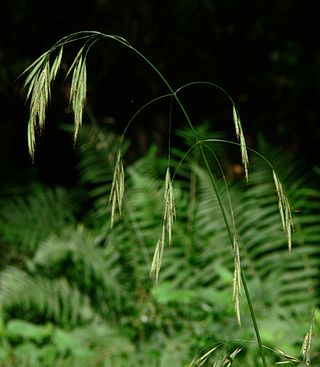
Bromus ramosus, the hairy brome, is a bunchgrass in the grass family Poaceae, native to Europe, northwest Africa and southwest Asia. The name Bromus comes from the term brome, meaning oats. Unlike most other bromes, it grows in shady sites under trees.
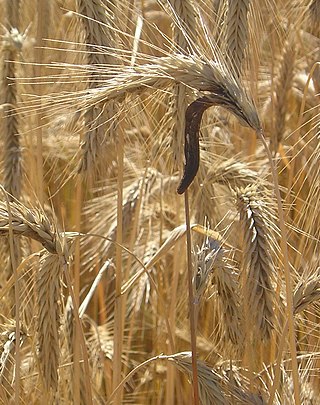
Claviceps purpurea is an ergot fungus that grows on the ears of rye and related cereal and forage plants. Consumption of grains or seeds contaminated with the survival structure of this fungus, the ergot sclerotium, can cause ergotism in humans and other mammals. C. purpurea most commonly affects outcrossing species such as rye, as well as triticale, wheat and barley. It affects oats only rarely.

Bromus hordeaceus, the soft brome, is an annual or biennial species of grass in the grass family (Poaceae). It is also known in North America as bull grass, soft cheat, and soft chess.

Bromus diandrus is a species of grass known by the common names great brome and "ripgut brome".

Bromus sterilis is an annual or biennial species of bromegrass known as barren brome, poverty brome, and sterile brome.

Pigeon Island is a small island located need the middle of the Wallabi Group of the Houtman Abrolhos, an archipelago off the coast of Western Australia. It is almost entirely given over to western rock lobster fishers' camps, and as a result is far more disturbed than most other islands in the archipelago. A nearby island also seasonally populated by fishers is named Little Pigeon Island, hence Pigeon Island is sometimes referred to as "Big Pigeon Island".

Bromus madritensis is a species of brome grass known by the common name compact brome. The specific epithet madritensis refers to Madrid, Spain. It has a diploid number of 28.
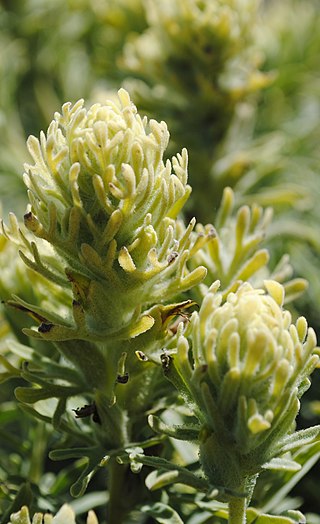
Castilleja grisea is a rare species of Indian paintbrush known by the common name San Clemente Island Indian paintbrush. It is endemic to San Clemente Island, one of the Channel Islands of California. San Clemente Island is owned by the US Navy so the Navy is involved in a management program to recover this species.

Bromus maritimus is a species of brome grass known by the common names maritime brome and seaside brome. It is native to the coastal areas of California and Oregon.

Bromus kalmii, Kalm's brome, is a species of brome grass. It is a native bunchgrass in the North-central and Northeastern United States, the Great Lakes region, and eastern Canada. The specific epithet kalmii refers to its discoverer Pehr Kalm.
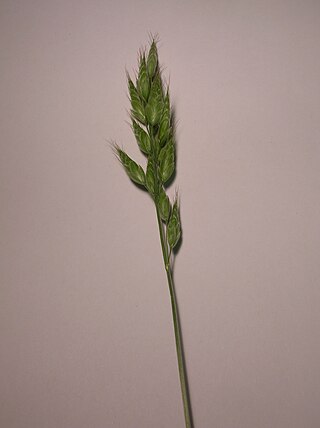
Bromus commutatus, the meadow brome, is an annual or biennial species of plant in the grass family Poaceae. In the United States it is known as hairy chess.
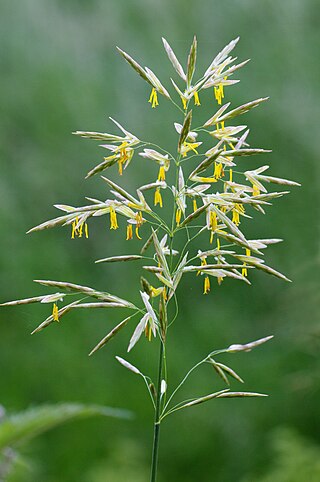
Bromus inermis is a species of the true grass family (Poaceae). This rhizomatous grass is native to Europe and considered invasive in North America.

Bromus rigidus, the ripgut brome, is a grass native to Eurasia and naturalized in North America. The specific epithet rigidus means rigid or stiff.



















